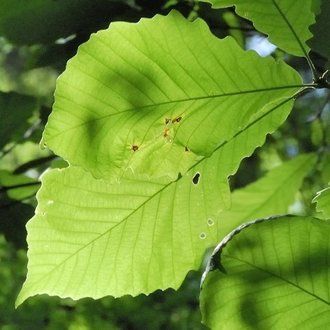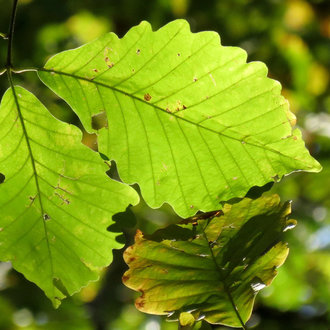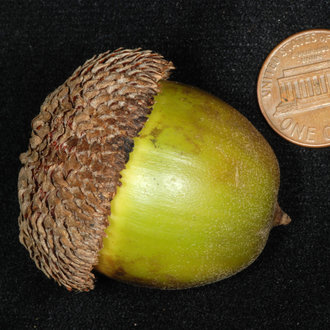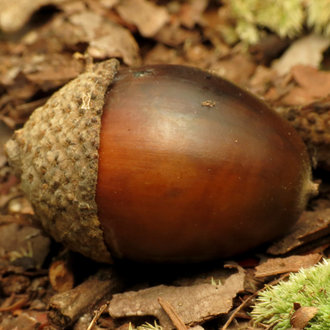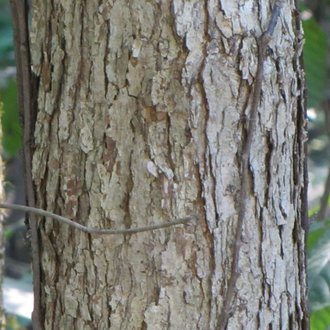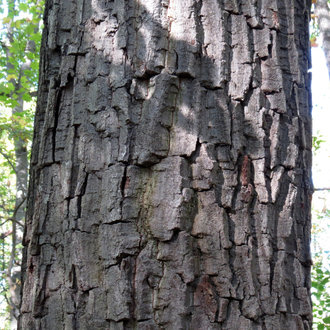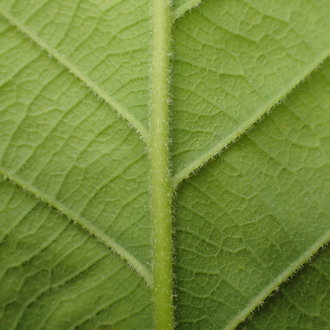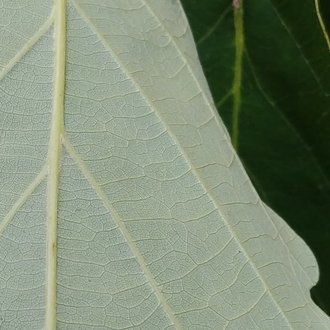Swamp Chestnut Oak vs Chestnut Oak
These species are sometimes confused where their ranges overlap. Their habitats, however, overlap little: chestnut oak prefers dry, upland sites, and ranges farther north and to higher elevations; swamp chestnut oak occurrs on wet, bottomland sites, and ranges farther south. They are easily told apart by differences in bark or acorns, and with effort, leaves as well.
Swamp Chestnut Oak (Quercus michauxii) | Chestnut Oak (Quercus montana) |
A white oak of bottomlands in the southeastern coastal plain and Mississippi valley, superficially resembling the chestnut oak. | A native oak of ridgetops and dry uplands with acidic soils, especially in the Appalachians, named for its resemblance to the American chestnut. |
Leaves usually have 15-20 secondary veins on each side. Lobe tips may be rounded but may also be pointier. Photo © Rob John, CC BY 4.0. | Leaves usually have 10-14 (rarely up to 16) secondary veins on each side. Lobe tips average more rounded. Photo © Katja Schulz, CC BY 4.0. |
Acorn has thicker cap, very flat at the base. Individual acorn cap scales more readily visible. Photo © Doug Goldman, CC BY 4.0. | Acorn has thin cap, more tapered at the base. Individiual acorn cap scales not as readily visible. Photo © Katja Schulz, CC BY 4.0. |
Bark more scaly, with thinner plates of bark flaking off slightly in vertical strips Photo © Ken Kneidel, Public Domain. | Bark has thick, blocky vertical ridges with numerous horizontal cracks. Photo © Katja Schulz, CC BY 4.0. |
Leaf undersides velvety to the touch, due to minute hairs, easily visible to the naked eye or in a good photograph. Photo © Austin Pursley, Public Domain. | Leaf undersides have only sparse hairs, mostly along veins; not velvety to the touch and often appear hairless without magnification. Photo © Briggs Armstrong, CC BY 4.0. |
References & External Resources
These short lists show only links helpful for ID. For a complete list of references and resources also covering other aspects of ecology, visit the links section of the full article on each plant, which is the first entry here.



